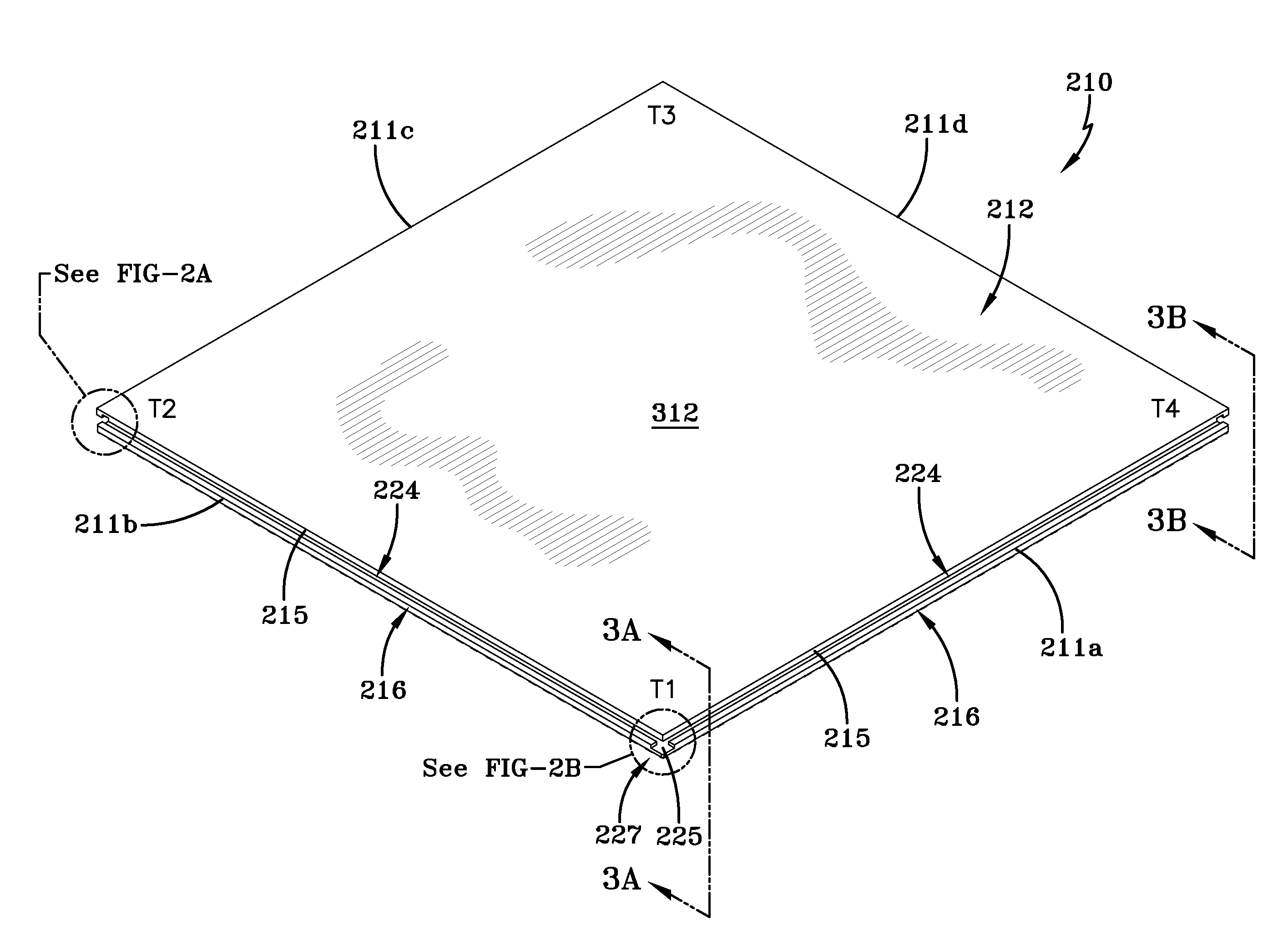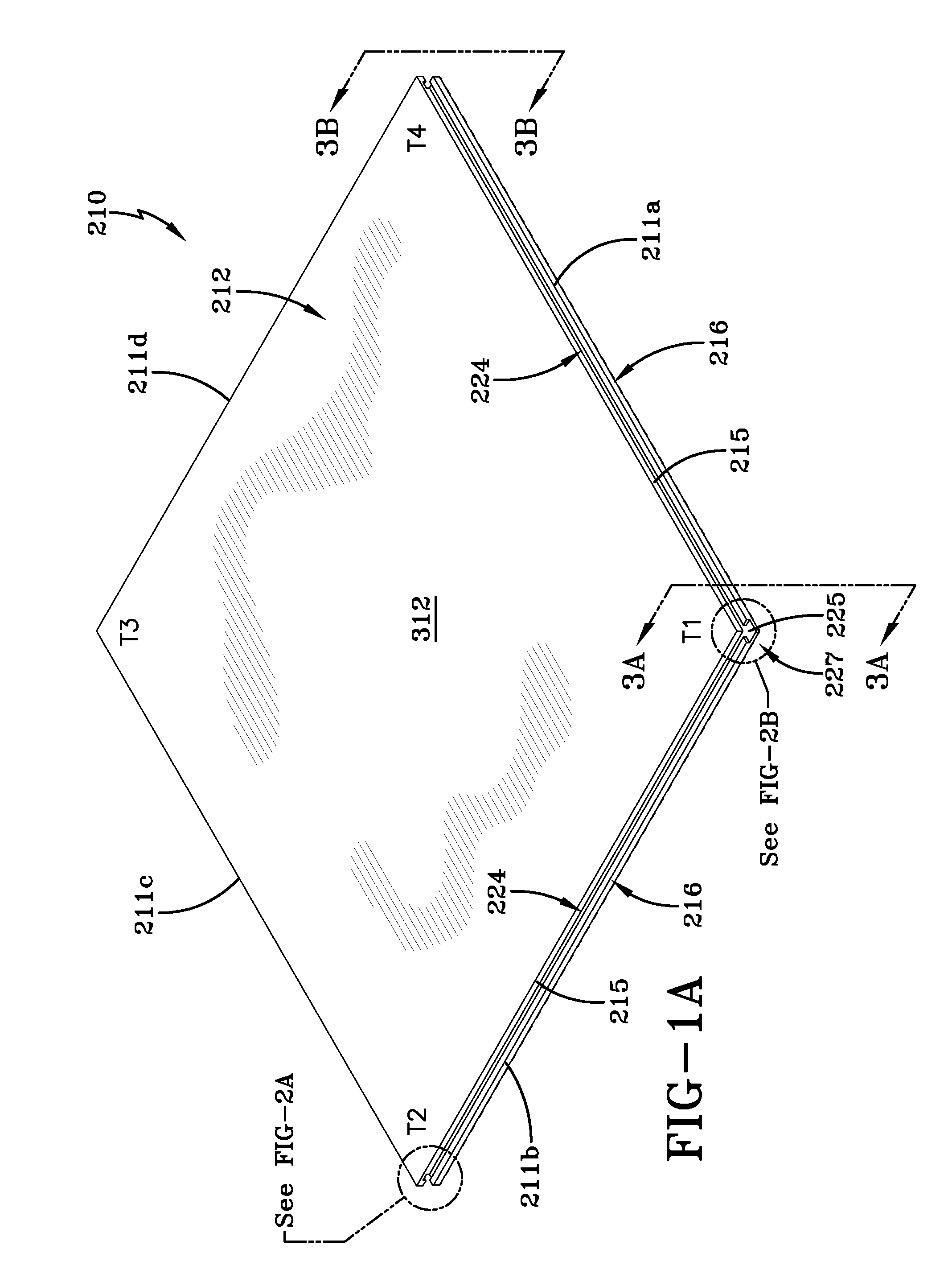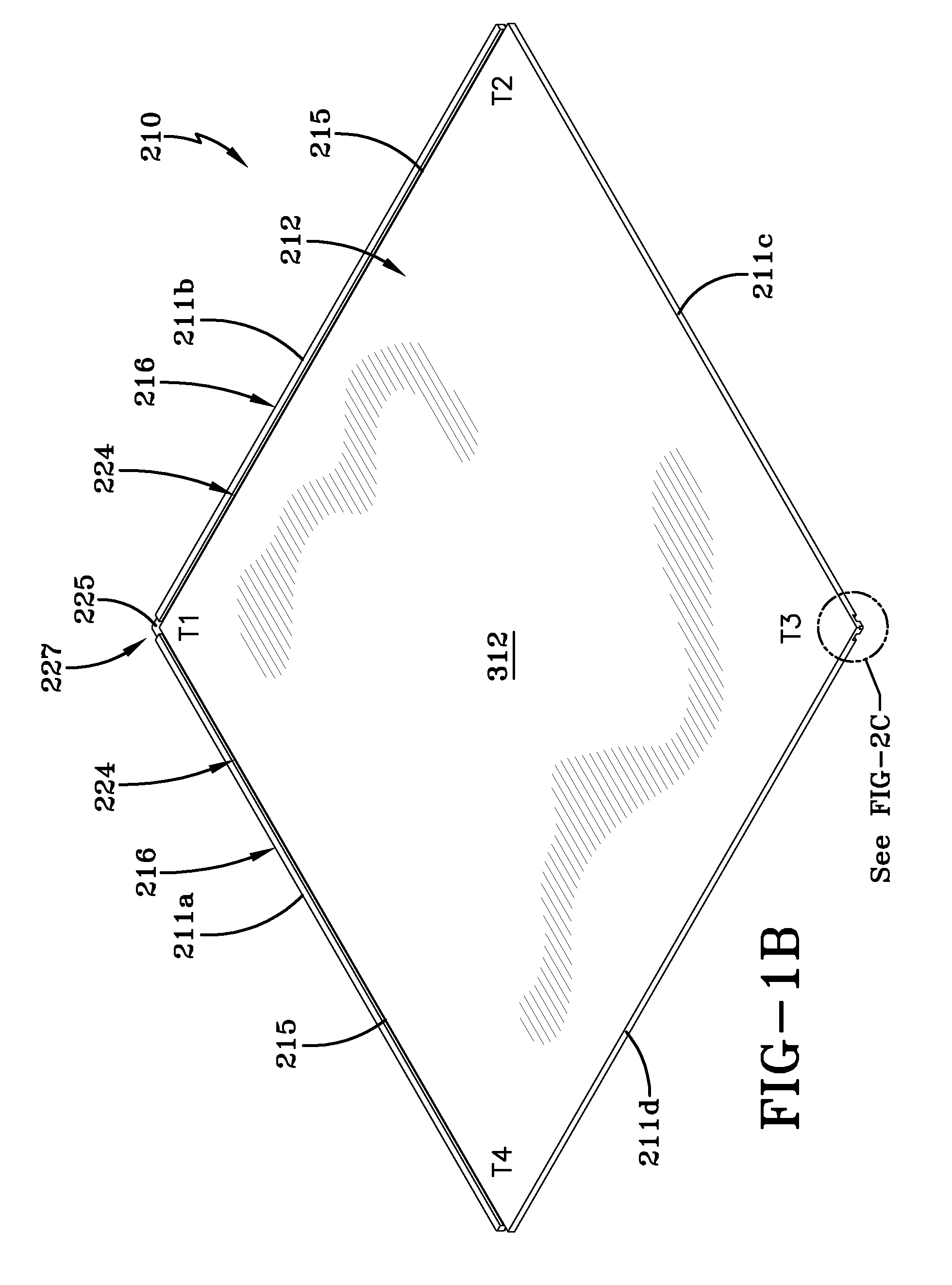Interlocking floor tile
a technology of interlocking floor tiles and interlocking plates, which is applied in the field of floor tiles, can solve the problems of not being flexible or cut resistant, not being as slip resistant as floors containing rubber, and being expensive and difficult to maintain traditional wood flooring, etc., and achieves the effects of efficient and economical manufacturing, effective production, installation and us
- Summary
- Abstract
- Description
- Claims
- Application Information
AI Technical Summary
Benefits of technology
Problems solved by technology
Method used
Image
Examples
Embodiment Construction
[0058]The preferred embodiment of the present invention relates to an improved floor tile with an interlocking mechanism which is easy to be laid with a quality installation. The surface of the installed inventive floor tile is not completely and directly exposed to the subfloor and any contaminants thereof. The interlocking floor tile can be formed of any suitable flexible material, such as natural or synthetic rubber, among others. The tiles are not limited to a specific size but can be designed in any size to accommodate the size of the subfloor or floor and the space to be covered. The tile is preferably composed of an attractive exposed material when installed, with low cost but effective inexpensive material which is not exposed when the tile is installed. The inventive tile can be placed on a floor or subfloor, slid relative to adjacent tiles to the desired position, and pressed together with the adjacent tile to interlock them together. No adhesive is required or recommended...
PUM
| Property | Measurement | Unit |
|---|---|---|
| thickness | aaaaa | aaaaa |
| thickness | aaaaa | aaaaa |
| thickness | aaaaa | aaaaa |
Abstract
Description
Claims
Application Information
 Login to view more
Login to view more - R&D Engineer
- R&D Manager
- IP Professional
- Industry Leading Data Capabilities
- Powerful AI technology
- Patent DNA Extraction
Browse by: Latest US Patents, China's latest patents, Technical Efficacy Thesaurus, Application Domain, Technology Topic.
© 2024 PatSnap. All rights reserved.Legal|Privacy policy|Modern Slavery Act Transparency Statement|Sitemap



